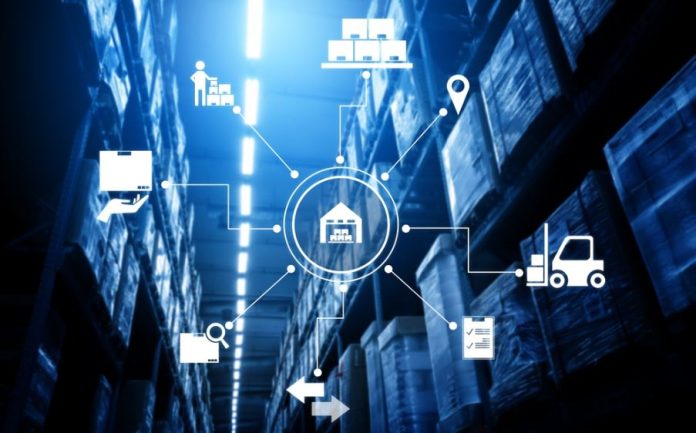Digital logistics in today’s era is evolving for every business . Logistics technology is developing swiftly, moving from tracking systems to state-of-the-art delivery options. But these days, it is more than just efficiency and speed! In this post, we explore some cutting-edge technologies that have the potential to revolutionize logistics and facilitate corporate operations.
This provides you with the most recent advancements in logistics technology. Continue reading to find out about the most recent technologies that are increasing profits and assisting businesses in achieving their objectives.
GPS Tracking Systems
It is believed that tracking systems are essential to modern digital logistics and that their absence would be damaging. Transportation has been considerably easier thanks to GPS, which makes it easy to find a product, piece of equipment, or truck exactly. As the name implies, fleet management and logistics require GPS tracking to monitor mobility.
GPS is utilized to precisely track the location, speed, and path the vehicle travels when moving items from the point of origin to the destination. High-Speed Internet Plans are needed for it.
When used properly, technology can be useful and offer maximum efficiency in delivery schedules, the most efficient routes, and the duration of transportation.
Internet of Things (IoT) Sensors
IoT sensors are essential to the transformation of the logistics sector. digital logistics has changed the whole world. These sensors are incorporated into various goods, such as inventory items, trucks, and containers, enabling Internet-based communication between them and central systems.
IoT sensors in logistics monitor the state, whereabouts, and status of commodities all the way through the supply chain. It gives businesses important information about how goods are moved and handled, increasing their visibility and control over the whole process.
Advantages come from using Internet of Things sensors for logistics purposes. The sensors allow better watching over supply routes. They support inventory control. Rules and laws become easier to follow.
Logistics companies can better their operations, lower costs, and deliver improved customer service using IoT technology. IoT sensors are very important in updating logistics processes and permitting the industry to match today’s connected world’s fast pace and demands.
Autonomous Vehicles in digital logistics.jpg
Smart trucks use sensors and coding to navigate. This new approach has several advantages. It is less expensive because no drivers are hired, and less gasoline is burned. Because machines make fewer mistakes than humans, there are fewer crashes. This is one of the boon of digital logistics in this era
Because robots don’t require sleep breaks as people do, deliveries are completed more quickly. These cars’ algorithms are transforming supply chain management. Robots, electric vehicles, drones, forklifts, and autonomous trucks are some of the tools utilized to boost productivity and security.
It offers processing precision while cutting costs. They are adaptive and flexible to shifting needs and operating specifications.
Robotics
Logistics have robots doing important jobs. In warehouses, robots pick, pack, and sort things. It helps by making things faster and using less human workers. Vehicles without drivers move goods around the warehouse.
Robot arms do the same tasks over and over, like stacking boxes and loading. These robots work with people to get more done safely. Using less manual work, robot logistics are quicker, more precise, and cost less. They also let warehouses operate all day, every day, which is needed for fast online orders.
Data Twins
To enhance digital logistics and the effectiveness of the supply chain and streamline activities, 3PL service providers now depend heavily on digital twin technology.
A digital twin is a real-time, virtualized version of a physical system or process that may be used for modeling and evaluating different scenarios. 3PLs can find possible delays, streamline routes, and enhance inventory control by modeling the supply chain.
Example:
A company has deployed a digital twin system to streamline the movement of wind turbine components from production facilities to project sites. Data about the element’s physical properties, routes of transit, and logistics procedures are all included in the model.
The company has lowered transportation costs and expedited delivery times through scenario modeling and supply chain optimization with the replica model. Thanks to the digital twin solution’s real-time supply chain monitoring feature. It can react proactively to any delays or disturbances in the supply chain.
Conclusion
Although 3PLs’ top priorities will always be on-time delivery and accurate shipment, the increasing need for e-commerce has demanded more advanced and creative technology.
For 3PL providers to reach their growth objectives, these technologies will be necessary to manage their fleets and improve their operations. Several manufacturers and suppliers typically own the digital logistics network.
A business may outsource some or all of its storage needs to a third-party logistics (3PL) provider, giving it some degree of authority over the operations. Businesses hire 4PL vendors to handle all aspects of logistics, involving administration and oversight.
Clients who outsource every aspect of their supply chain save themselves the trouble of handling costly, time-consuming logistical processes. digital logistics with Digitalization is possible with a strategic collaborative framework in the logistics industry in Saudi Arabia.

